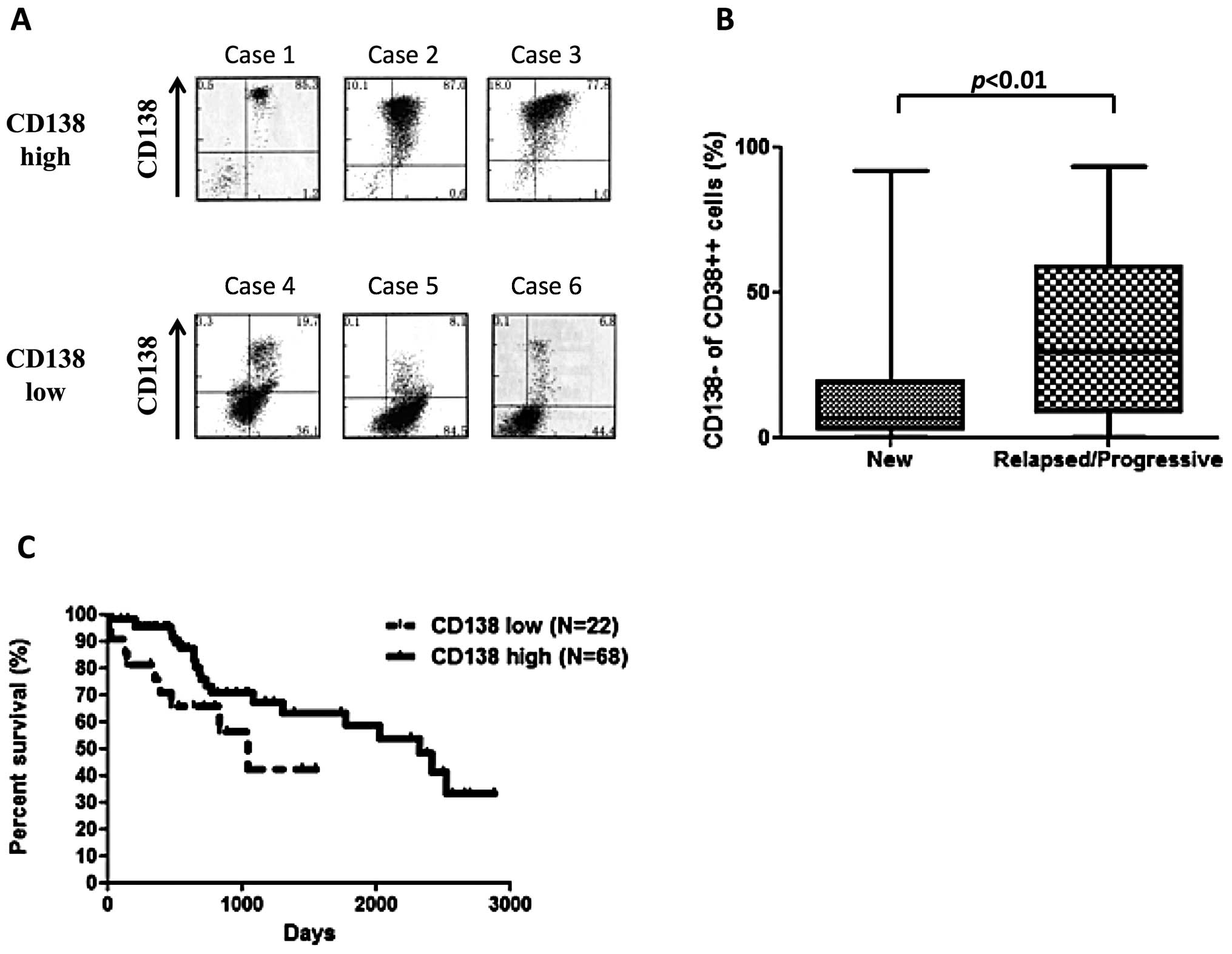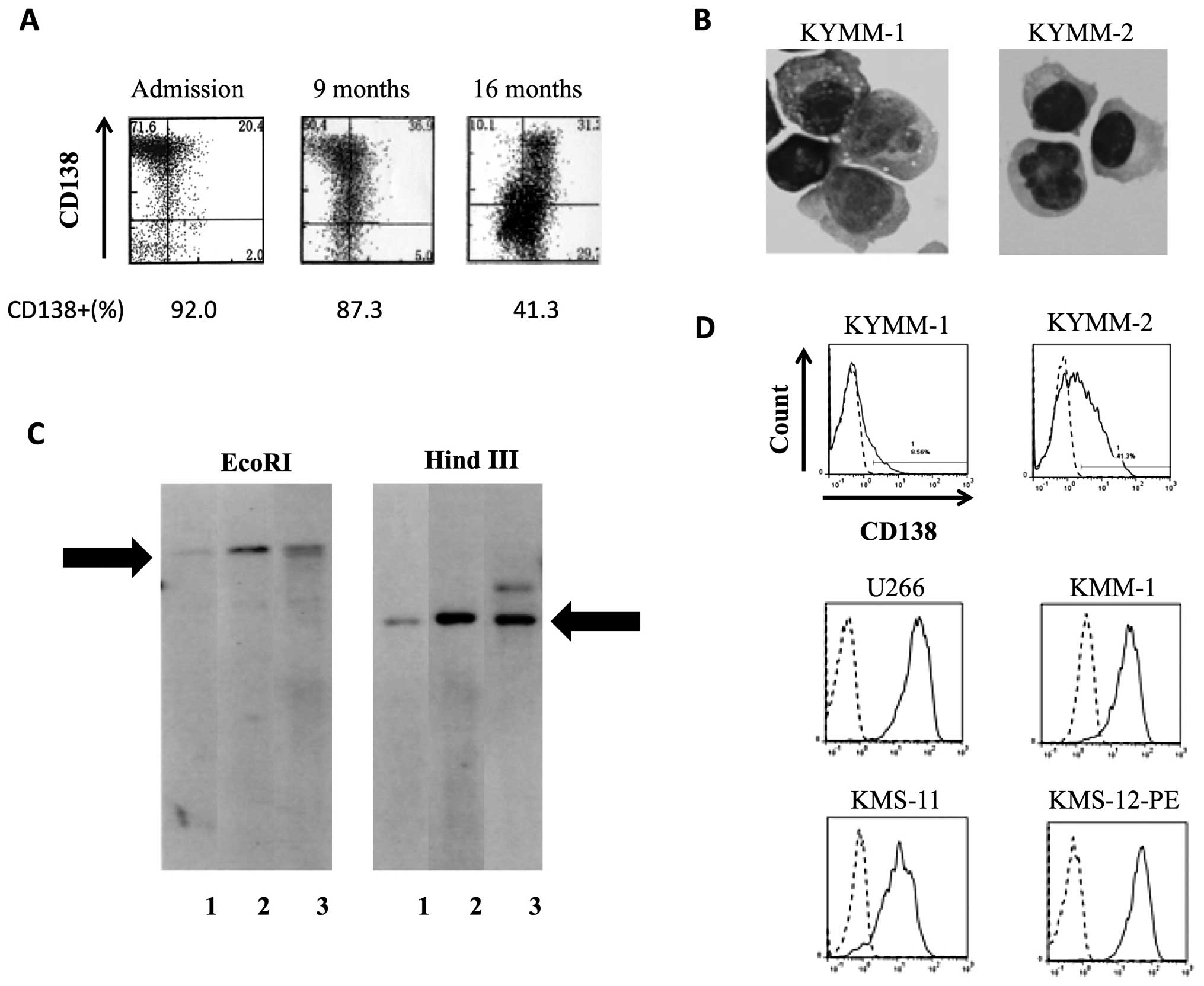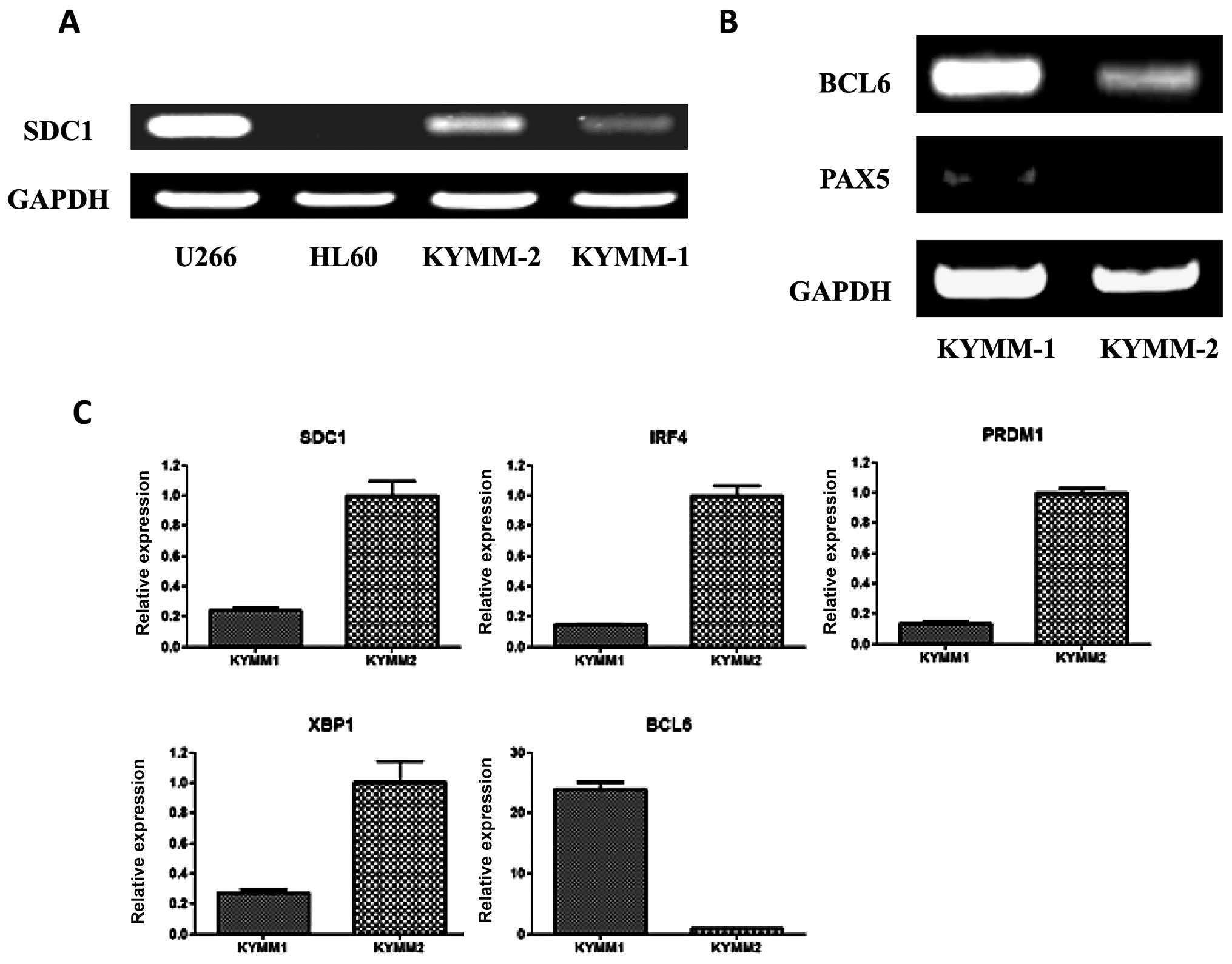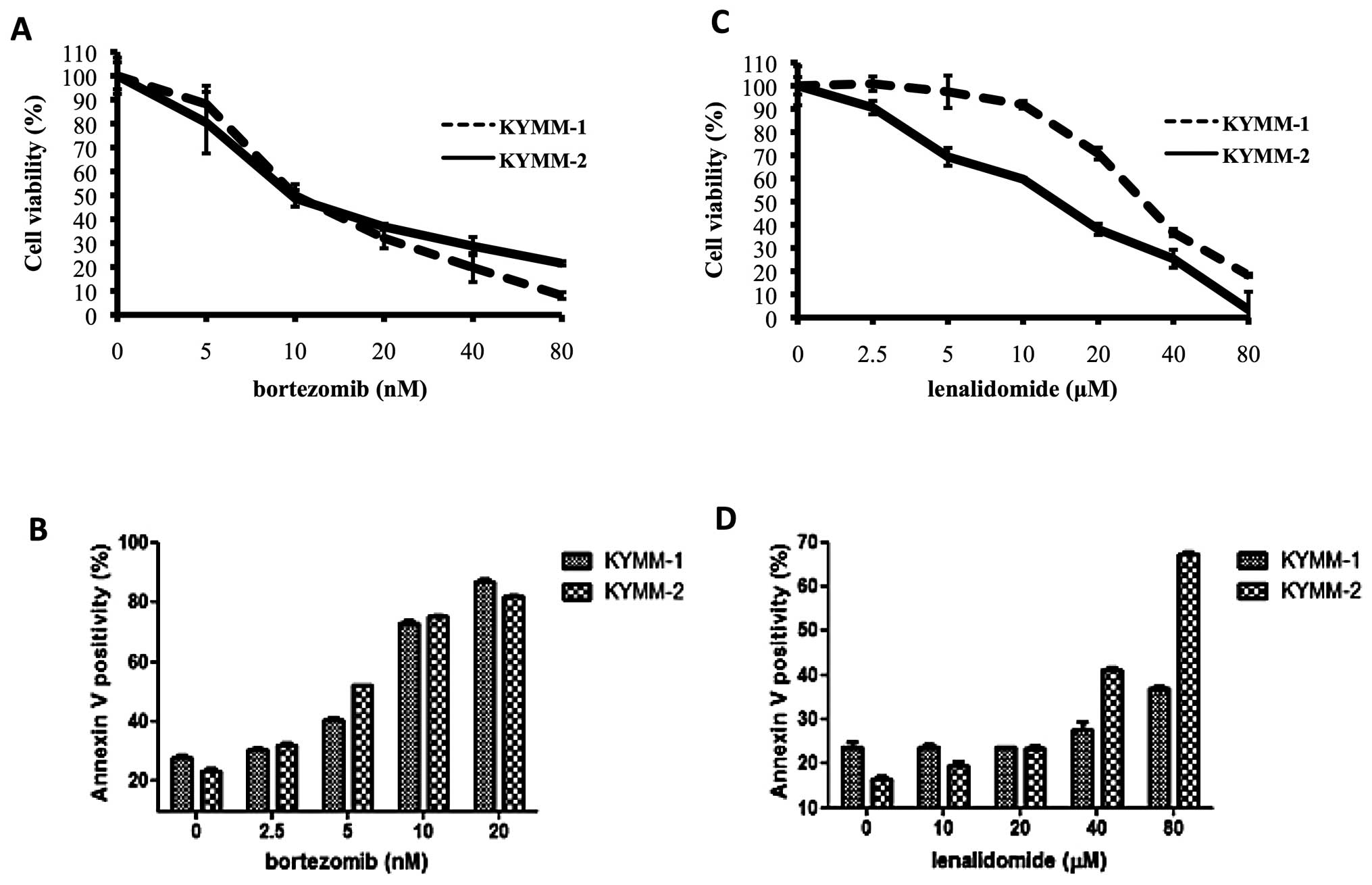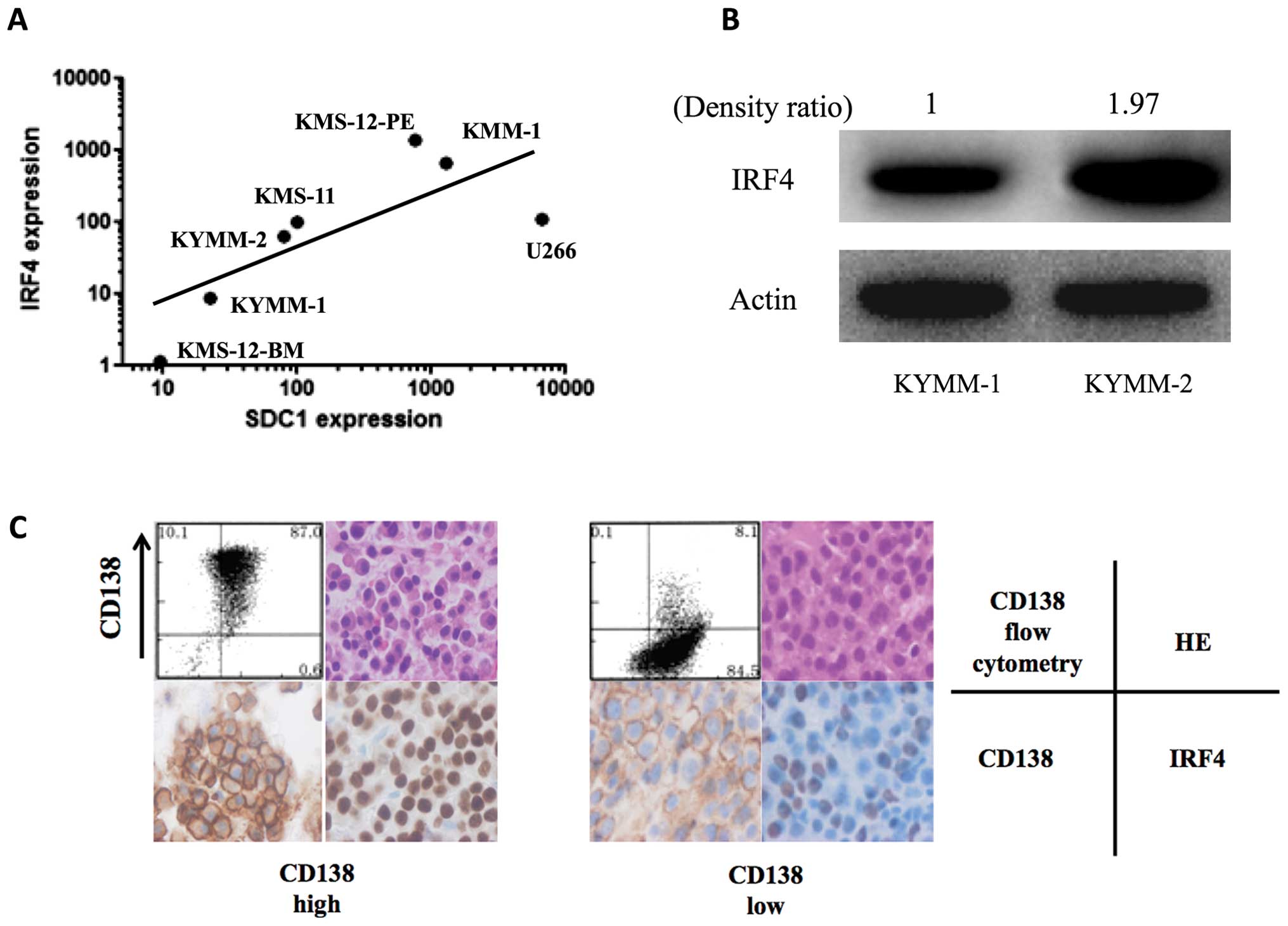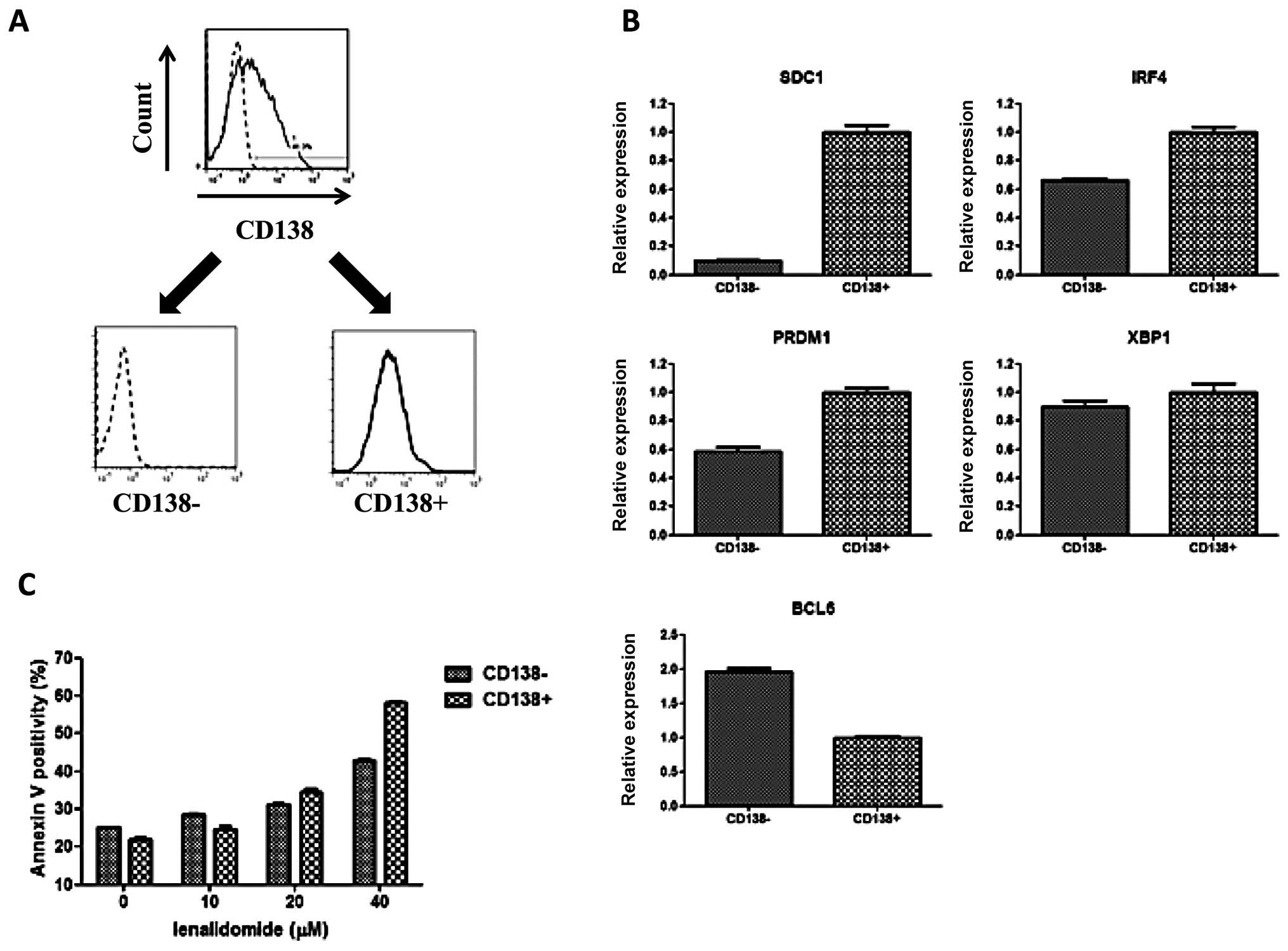|
1
|
Calame KL: Plasma cells: finding new light
at the end of B cell development. Nat Immunol. 2:1103–1108. 2001.
View Article : Google Scholar : PubMed/NCBI
|
|
2
|
Dhodapkar MV, Abe E, Theus A, et al:
Syndecan-1 is a multi-functional regulator of myeloma pathobiology:
control of tumor cell survival, growth, and bone cell
differentiation. Blood. 91:2679–2688. 1998.PubMed/NCBI
|
|
3
|
Ridley RC, Xiao H, Hata H, Woodliff J,
Epstein J and Sanderson RD: Expression of syndecan regulates human
myeloma plasma cell adhesion to type I collagen. Blood. 81:767–774.
1993.PubMed/NCBI
|
|
4
|
Wijdenes J, Vooijs WC, Clement C, et al: A
plasmocyte selective monoclonal antibody (B-B4) recognizes
syndecan-1. Br J Haematol. 94:318–323. 1996. View Article : Google Scholar : PubMed/NCBI
|
|
5
|
Zhan F, Huang Y, Colla S, et al: The
molecular classification of multiple myeloma. Blood. 108:2020–2028.
2006. View Article : Google Scholar : PubMed/NCBI
|
|
6
|
Ikeda H, Hideshima T, Fulciniti M, et al:
The monoclonal antibody nBT062 conjugated to cytotoxic
Maytansinoids has selective cytotoxicity against CD138-positive
multiple myeloma cells in vitro and in vivo. Clin Cancer Res.
15:4028–4037. 2009. View Article : Google Scholar
|
|
7
|
Witzig TE, Kimlinger T, Stenson M and
Therneau T: Syndecan-1 expression on malignant cells from the blood
and marrow of patients with plasma cell proliferative disorders and
B-cell chronic lymphocytic leukemia. Leuk Lymphoma. 31:167–175.
1998. View Article : Google Scholar : PubMed/NCBI
|
|
8
|
Reid S, Yang S, Brown R, et al:
Characterisation and relevance of CD138-negative plasma cells in
plasma cell myeloma. Int J Lab Hematol. 32:e190–e196. 2010.
View Article : Google Scholar : PubMed/NCBI
|
|
9
|
Matsui W, Huff CA, Wang Q, et al:
Characterization of clonogenic multiple myeloma cells. Blood.
103:2332–2336. 2004. View Article : Google Scholar : PubMed/NCBI
|
|
10
|
Harada H, Kawano MM, Huang N, et al:
Phenotypic difference of normal plasma cells from mature myeloma
cells. Blood. 81:2658–2663. 1993.PubMed/NCBI
|
|
11
|
Ohmori M, Nagai M, Fujita M, et al: A
novel mature B-cell line (DOBIL-6) producing both parathyroid
hormone-related protein and interleukin-6 from a myeloma patient
presenting with hypercalcaemia. Br J Haematol. 101:688–693. 1998.
View Article : Google Scholar : PubMed/NCBI
|
|
12
|
Togawa A, Inoue N, Miyamoto K, Hyodo H and
Namba M: Establishment and characterization of a human myeloma cell
line (KMM-1). Int J Cancer. 29:495–500. 1982. View Article : Google Scholar : PubMed/NCBI
|
|
13
|
Namba M, Ohtsuki T, Mori M, et al:
Establishment of five human myeloma cell lines. In Vitro Cell Dev
Biol. 25:723–729. 1989. View Article : Google Scholar : PubMed/NCBI
|
|
14
|
Ohtsuki T, Yawata Y, Wada H, Sugihara T,
Mori M and Namba M: Two human myeloma cell lines, amylase-producing
KMS-12-PE and amylase-non-producing KMS-12-BM, were established
from a patient, having the same chromosome marker,
t(11;14)(q13;q32). Br J Haematol. 73:199–204. 1989. View Article : Google Scholar
|
|
15
|
Nilsson K, Bennich H, Johansson SG and
Ponten J: Established immunoglobulin producing myeloma (IgE) and
lymphoblastoid (IgG) cell lines from an IgE myeloma patient. Clin
Exp Immunol. 7:477–489. 1970.PubMed/NCBI
|
|
16
|
Birnie GD: The HL60 cell line: a model
system for studying human myeloid cell differentiation. Br J
Cancer. (Suppl)9:41–45. 1988.PubMed/NCBI
|
|
17
|
Mahmoud MS, Huang N, Nobuyoshi M, Lisukov
IA, Tanaka H and Kawano MM: Altered expression of Pax-5 gene in
human myeloma cells. Blood. 87:4311–4315. 1996.PubMed/NCBI
|
|
18
|
Tatetsu H, Ueno S, Hata H, et al:
Down-regulation of PU.1 by methylation of distal regulatory
elements and the promoter is required for myeloma cell growth.
Cancer Res. 67:5328–5336. 2007. View Article : Google Scholar : PubMed/NCBI
|
|
19
|
Livak KJ and Schmittgen TD: Analysis of
relative gene expression data using real-time quantitative PCR and
the 2(−Delta Delta C(T)) method. Methods. 25:402–408. 2001.
|
|
20
|
Matsuno N, Hoshino K, Nanri T, et al: p15
mRNA expression detected by real-time quantitative reverse
transcriptase-polymerase chain reaction correlates with the
methylation density of the gene in adult acute leukemia. Leuk Res.
29:557–564. 2005. View Article : Google Scholar
|
|
21
|
Shapiro-Shelef M and Calame K: Regulation
of plasma-cell development. Nat Rev Immunol. 5:230–242. 2005.
View Article : Google Scholar
|
|
22
|
Lopez-Girona A, Heintel D, Zhang LH, et
al: Lenalidomide downregulates the cell survival factor, interferon
regulatory factor-4, providing a potential mechanistic link for
predicting response. Br J Haematol. 154:325–336. 2011. View Article : Google Scholar
|
|
23
|
Li S, Pal R, Monaghan SA, et al: IMiD
immunomodulatory compounds block C/EBP{beta} translation through
eIF4E down-regulation resulting in inhibition of MM. Blood.
117:5157–5165. 2009.PubMed/NCBI
|
|
24
|
Peceliunas V, Janiulioniene A,
Matuzeviciene R and Griskevicius L: Six color flow cytometry
detects plasma cells expressing aberrant immunophenotype in bone
marrow of healthy donors. Cytometry B Clin Cytom. 80:318–323. 2011.
View Article : Google Scholar : PubMed/NCBI
|
|
25
|
Bataille R, Jego G, Robillard N, et al:
The phenotype of normal, reactive and malignant plasma cells.
Identification of ‘many and multiple myelomas’ and of new targets
for myeloma therapy. Haematologica. 91:1234–1240. 2006.PubMed/NCBI
|
|
26
|
Pope B, Brown RD, Gibson J, Yuen E and
Joshua D: B7-2-positive myeloma: incidence, clinical
characteristics, prognostic significance, and implications for
tumor immunotherapy. Blood. 96:1274–1279. 2000.PubMed/NCBI
|
|
27
|
Lin P, Mahdavy M, Zhan F, Zhang HZ, Katz
RL and Shaughnessy JD: Expression of PAX5 in CD20-positive multiple
myeloma assessed by immunohistochemistry and oligonucleotide
microarray. Mod Pathol. 17:1217–1222. 2004. View Article : Google Scholar : PubMed/NCBI
|
|
28
|
Hideshima T, Mitsiades C, Ikeda H, et al:
A proto-oncogene BCL6 is up-regulated in the bone marrow
microenvironment in multiple myeloma cells. Blood. 115:3772–3775.
2010. View Article : Google Scholar : PubMed/NCBI
|
|
29
|
Fuhler GM, Baanstra M, Chesik D, et al:
Bone marrow stromal cell interaction reduces syndecan-1 expression
and induces kinomic changes in myeloma cells. Exp Cell Res.
316:1816–1828. 2010. View Article : Google Scholar : PubMed/NCBI
|
|
30
|
Matsui W, Wang Q, Barber JP, et al:
Clonogenic multiple myeloma progenitors, stem cell properties, and
drug resistance. Cancer Res. 68:190–197. 2008. View Article : Google Scholar : PubMed/NCBI
|
|
31
|
Brennan SK, Wang Q, Tressler R, et al:
Telomerase inhibition targets clonogenic multiple myeloma cells
through telomere length-dependent and independent mechanisms. PLoS
One. 5:e124872010. View Article : Google Scholar
|















